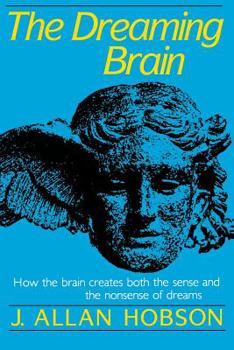Dreaming Brain: How the Brain Create Both the Sense and the Nonsense of Dreams
Select Format
Select Condition 
Book Overview
A Harvard Medical School psychiatrist and neuroscientist shows how dream science draws on psychology and neurobiology to provide new insight into the nature of the human mind. This description may be from another edition of this product.
Format:Paperback
Language:English
ISBN:0465017029
ISBN13:9780465017027
Release Date:October 1989
Publisher:Basic Books
Length:336 Pages
Weight:1.21 lbs.
Dimensions:0.8" x 6.0" x 9.1"
Customer Reviews
1 rating
Enjoy your Dreams
Published by Thriftbooks.com User , 20 years ago
Dreaming inevitably seems like the flip side of consciousness. Indeed it was Freud's "discovery of the unconscious" that fueled the 20th century's most important movement in psychology: psychoanalysis. Dreaming, arguably a psychotic state, is deeply meaningful for psychoanalysts who apply rational means to irrational human drives. But neuroses are equally meaningful. And by looking at these fractured states of mind, psychoanalysts believed that they could discern the underlying structure of the emotions. (I have often thought this seemed like divining the functions of internal combustion for transportation by visiting junkyards.) Dreams, long held by seers and Freudians to be the voice of the unconscious, are better and more productively seen as more continuous with conscious thought. So says J. Allen Hobson, a Harvard Medical School psychiatrist and neuroscientist, who plucks dreams from the realm of mystery, and restores dreaming to a place where it is possible to generalize about the human mind from the physiology of dreaming. Dreamstates are brainstates. And studying dreams is to construct a psychology of the normal.There is little left of Freud's explanation of dreams when Hobson finishes. But he understands his own investigations as part of Freud's legacy. Hobson discards the fundamental psychoanalytic division of dreams into their manifest and latent content, in favor of a theory that still extracts meaning from dreams, yet no longer sees them as elaborate defense mechanisms deployed to censor the sleeping mind from its horrifying instinctual preoccupations. Freud hoped for a biology of the mind, and predicted that one day our psychology would follow that route. But with neurology in a primitive state, Freud abandoned this "Project for a Scientific Psychology," (1895) and undertook a more literary analysis of dreams that we know famously as The Interpretation of Dreams (1900). This work features his dream dissections on based in a "hydraulic" view of psychodynamics where id, ego and superego fluidly displaced each other in ways that determined mental health and hygiene. Dreams acted as censors for Freud, mediating disturbing thoughts that bubbled up from the id, disguising alarming imagery with symbols, and ultimately protecting sleep. If we really knew the raging thoughts and images of our deep unconscious, we'd never manage to fall asleep.But for Hobson, understanding dreams requires understanding brain chemistry and brain anatomy - and these discoveries have been astonishing in their mounting volume and power. Taken together, they begin to constitute a biology of mind. We now understand where in the brain dreams originate. We know how long they last. We know how frequently they occur, and on what timetable. (Freud thought that dreams crammed into a few seconds before waking - actually dreams may last hours, and our brains may devote 50,000 hours to dreaming over a lifetime. Is there any other single endeavor we spend so much time on?)




